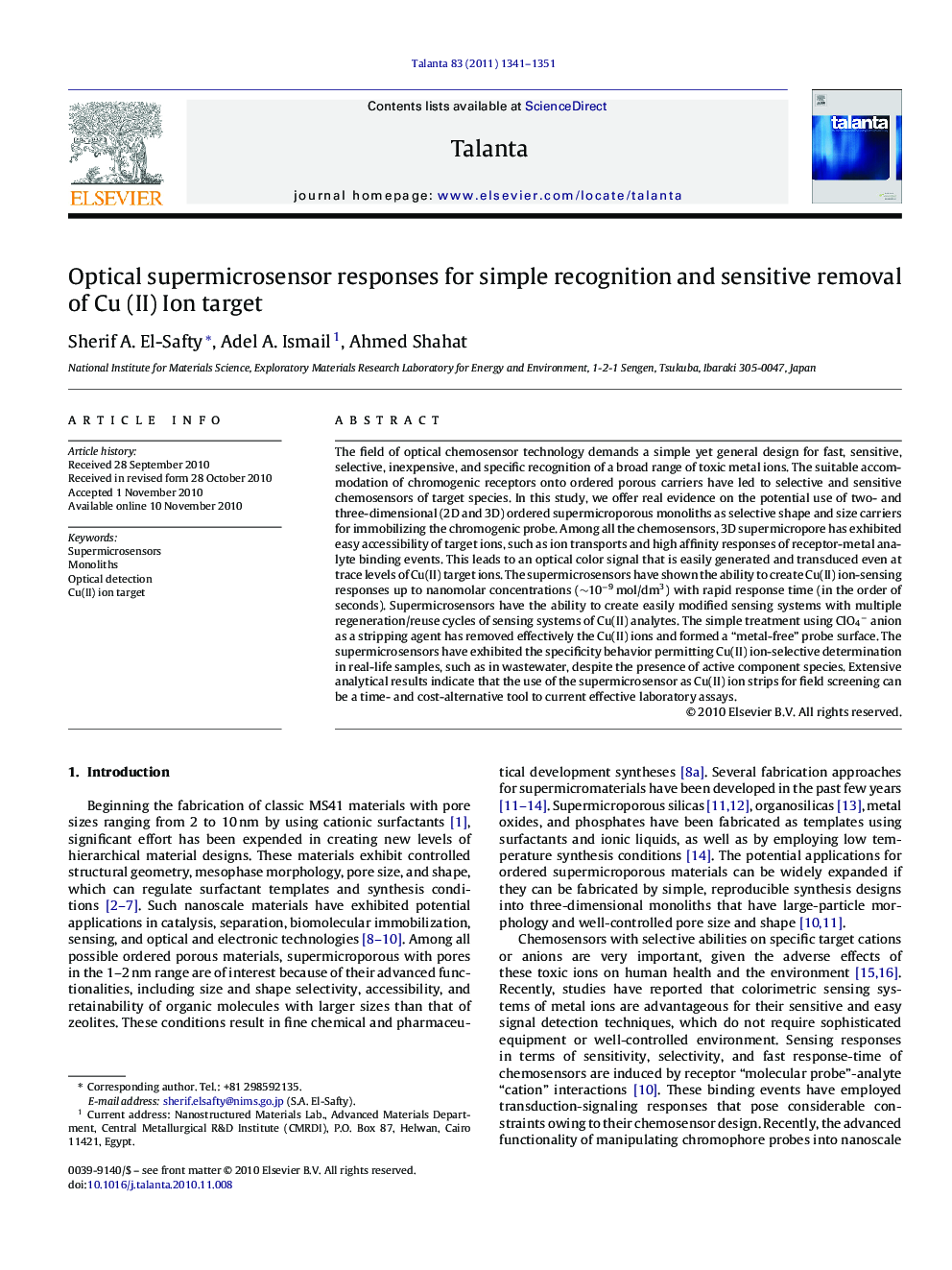| Article ID | Journal | Published Year | Pages | File Type |
|---|---|---|---|---|
| 10559530 | Talanta | 2011 | 11 Pages |
Abstract
The field of optical chemosensor technology demands a simple yet general design for fast, sensitive, selective, inexpensive, and specific recognition of a broad range of toxic metal ions. The suitable accommodation of chromogenic receptors onto ordered porous carriers have led to selective and sensitive chemosensors of target species. In this study, we offer real evidence on the potential use of two- and three-dimensional (2D and 3D) ordered supermicroporous monoliths as selective shape and size carriers for immobilizing the chromogenic probe. Among all the chemosensors, 3D supermicropore has exhibited easy accessibility of target ions, such as ion transports and high affinity responses of receptor-metal analyte binding events. This leads to an optical color signal that is easily generated and transduced even at trace levels of Cu(II) target ions. The supermicrosensors have shown the ability to create Cu(II) ion-sensing responses up to nanomolar concentrations (â¼10â9Â mol/dm3) with rapid response time (in the order of seconds). Supermicrosensors have the ability to create easily modified sensing systems with multiple regeneration/reuse cycles of sensing systems of Cu(II) analytes. The simple treatment using ClO4â anion as a stripping agent has removed effectively the Cu(II) ions and formed a “metal-free” probe surface. The supermicrosensors have exhibited the specificity behavior permitting Cu(II) ion-selective determination in real-life samples, such as in wastewater, despite the presence of active component species. Extensive analytical results indicate that the use of the supermicrosensor as Cu(II) ion strips for field screening can be a time- and cost-alternative tool to current effective laboratory assays.
Keywords
Related Topics
Physical Sciences and Engineering
Chemistry
Analytical Chemistry
Authors
Sherif A. El-Safty, Adel A. Ismail, Ahmed Shahat,
